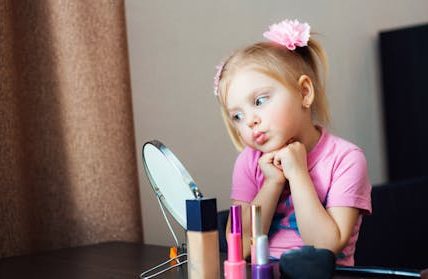A parents’ guide to keeping kids safe online in the summer holidays
Parenting over the summer holidays, especially when juggling work and childcare, comes with significant challenges. One of those is screen time and staying safe online.
Children’s time online has the potential to soar in the summer, and when you’re doing your best to work from home with the kids around, it’s pretty difficult to monitor what they’re doing on the tablet or TV. Devices help us get through the day, but they also open the door to risks we may not fully see.
I get it because I live it. I’m a safeguarding expert who researches child online safety, and I’m also the parent of two children currently on their school summer holidays.
According to a 2025 Ofcom report on child media use, over half (55%) of under-13s are already using social media, although many of these apps – such as TikTok, Snapchat and Instagram – have a 13+ age limit.
Among older children, around one in five (21%) of 13- to 17-year-olds are now livestreaming their own videos, adding a further layer of visibility and vulnerability. Around 30% of children aged between 13 and 17 couldn’t correctly identify a fake social media profile.
So how do we keep kids safe online this summer without becoming full-time tech experts? Here are four real-life scenarios and some practical ways to stay ahead.
You’re working from home… and they’re on YouTube
You finally have 15 quiet minutes to answer that backlog of emails. Meanwhile, your child is watching YouTube in the next room.
Even with the best intentions, YouTube’s autoplay and content suggestions can lead children down unexpected rabbit holes. According to Ofcom, YouTube is the most-watched online platform for children aged three to 17 – and therefore likely to be one of the first platforms where they may come across unsafe or confusing content.
Use YouTube Kids for younger children, and set restricted mode on regular YouTube for older ones. Turn off autoplay, which automatically plays a new video after the one you chose finishes, and check the watch history regularly.
Watch a few videos with them when you have a moment, and make it routine to ask: “What’s the funniest (or weirdest, or most interesting) video you watched today?” Openness beats surveillance every time.
Even among younger children, Ofcom’s data shows that social media is often used unsupervised, highlighting the importance of settings, filters and shared conversations about what they’re watching.
Your kids’ friends come over, and bring their phones
You might have set your own digital rules at home: no Snapchat or TikTok yet, for instance. Then a friend visits and pulls out their phone, casually opening apps your child isn’t allowed to use.
This kind of peer-led digital exposure is a challenge for parents, especially when visiting devices come with open access and fewer restrictions. Establish clear and simple house rules that are easy to apply to all devices, such as “No phones upstairs”. Limiting where children use their devices is helpful because it encourages openness and reduces the risk of hidden or unsupervised activity.
Talk with your child about why these rules matter: they might encounter age-inappropriate content, for instance. Make communal areas like the living room or kitchen tech-visible zones: places where screens are used in plain sight. This helps normalise check-ins and casual supervision, so it feels natural rather than intrusive.
What matters most is that children feel safe talking to you when something doesn’t feel right, whether it’s their phone or someone else’s.
“Everyone’s on Snapchat – why can’t I be?”
This is the classic peer-pressure moment. Your child tells you they’re the only one without a particular app and they just want to stay in touch with friends over the holidays.
This exact situation came up in our household. My daughter told me all her friends were using Snapchat, and she didn’t want to feel left out. Instead of simply saying no, I invited her to do some research first. She wrote a short summary explaining why she wanted the app, what the benefits were for her, what the potential dangers were and how she would reduce those risks.
She took the task seriously – she wanted the app! It turned into a great learning moment for both of us and gave her a sense of ownership and responsibility.
If this comes up in your household, you could try the same approach. Ask your child to present a case for any new app, including how they plan to stay safe. Discuss age limits (Snapchat is rated 13+) and why they exist.
You can say no to their request, but talk about why, and perhaps make a plan for when they can use it. If you agree, explore the app together. Review privacy settings, turn off location visibility, and look at any built-in safety tools.
When children feel informed and included in the process, they’re more likely to come to you when something doesn’t feel right.
You’re not a tech expert – and you’re worried
Let’s face it, many of us feel outpaced by the variety of new platforms. But here’s the truth: you don’t need to master every app. What matters most is creating a home culture where communication is open, boundaries are clear, and digital safety is part of everyday life, not something reserved for a crisis.
Set screen time limits early and revisit them together as your child grows. Where possible, link accounts, use family management tools or set up parental controls (even older children can benefit from some guardrails). Don’t be afraid to pick up your child’s phone and scroll through it, but with them, not behind their back. Openness builds trust.
If something feels off, talk about it. And if you’re unsure, ask for help, from schools, other parents, or one of the many expert resources available.
You don’t need to know everything. You just need to stay curious, stay involved and let your child know that if something goes wrong, you’re the first person they can turn to for support.
Michelle McManus has received funding from Home Office, Department for Education and National Independent Safeguarding Board Wales. She is also currently seconded as part of a Chancellor’s Fellowship at Manchester Met, with the VKPP, which is part of the National Centre for VAWG and Public Protection.



